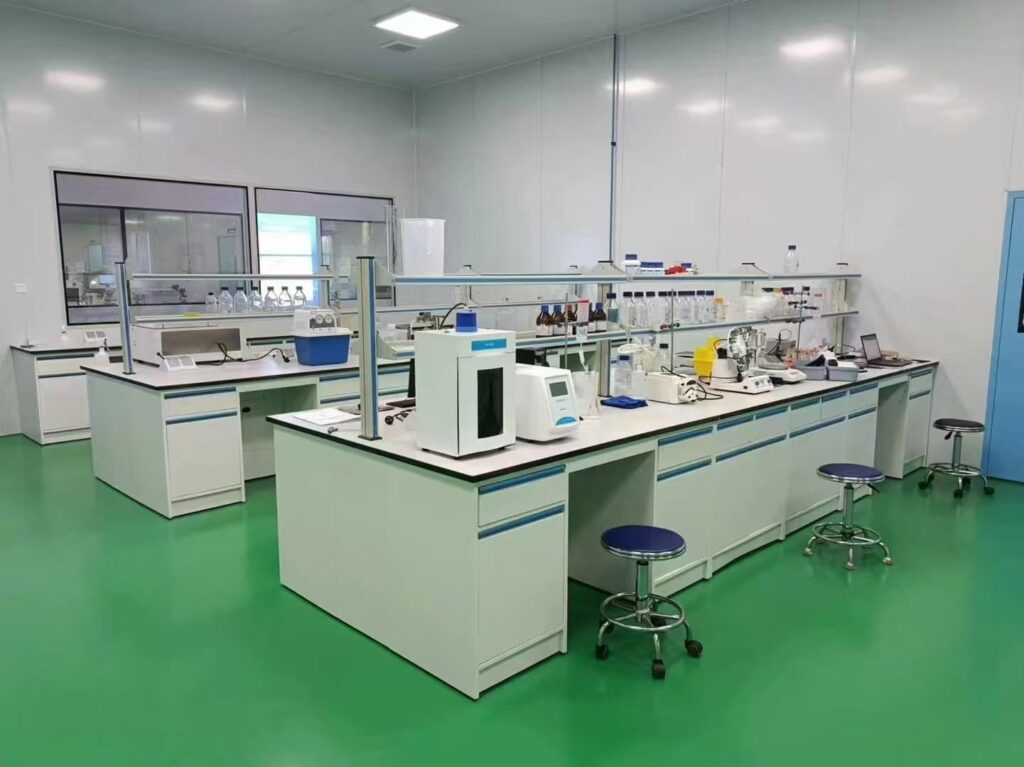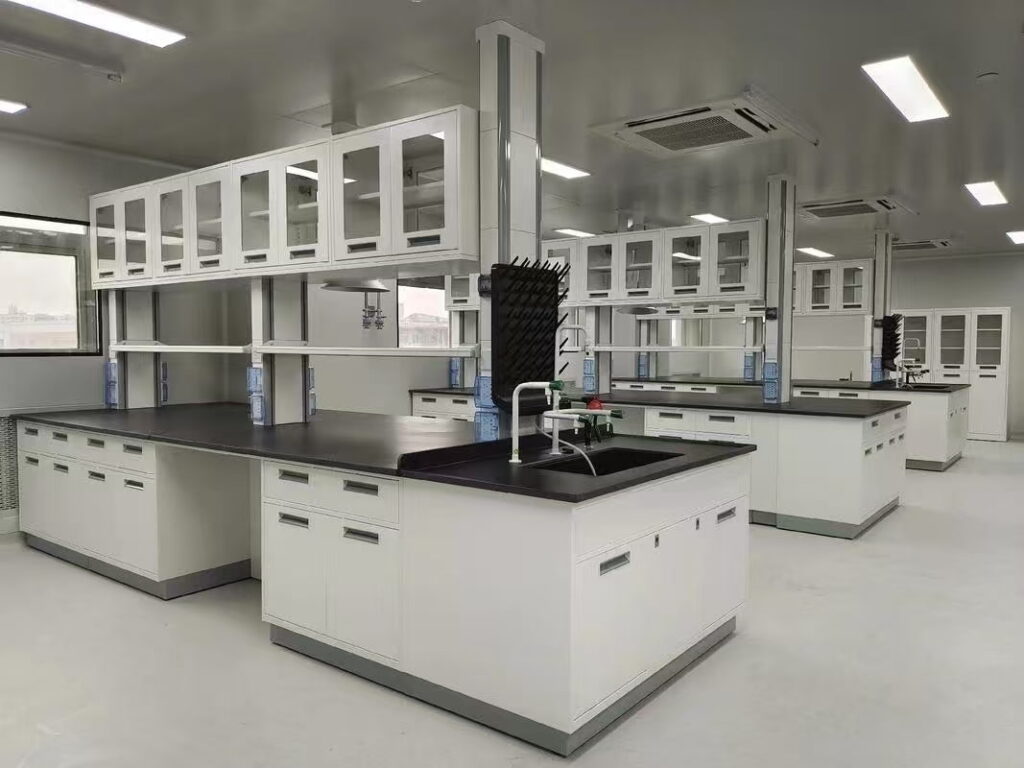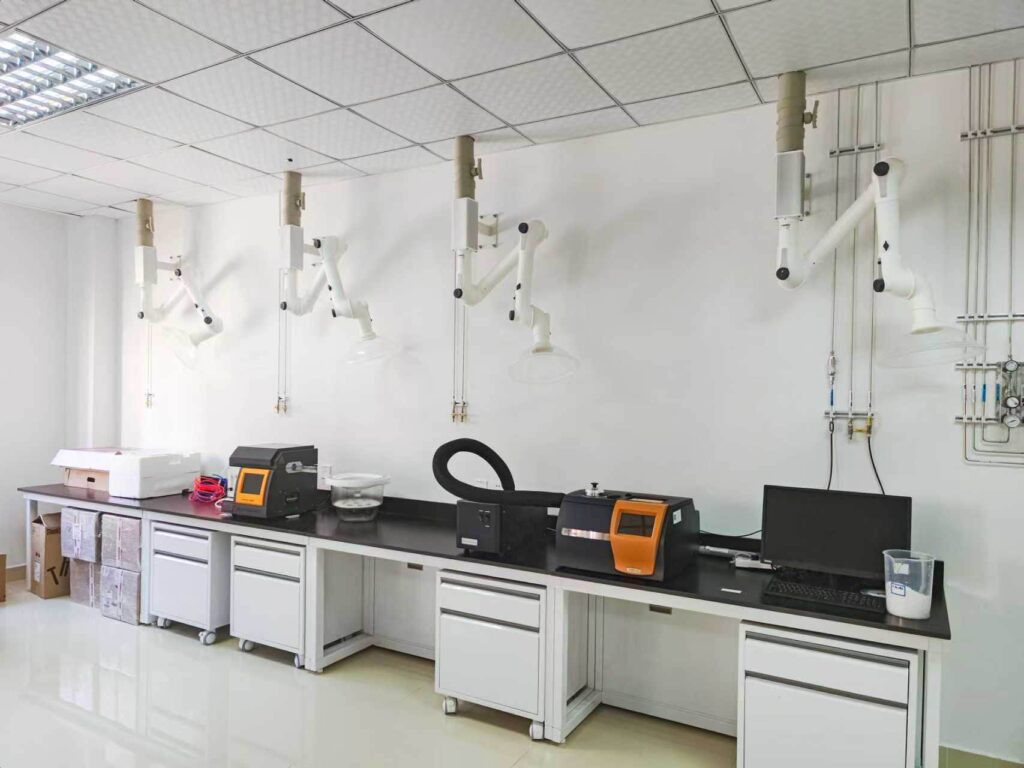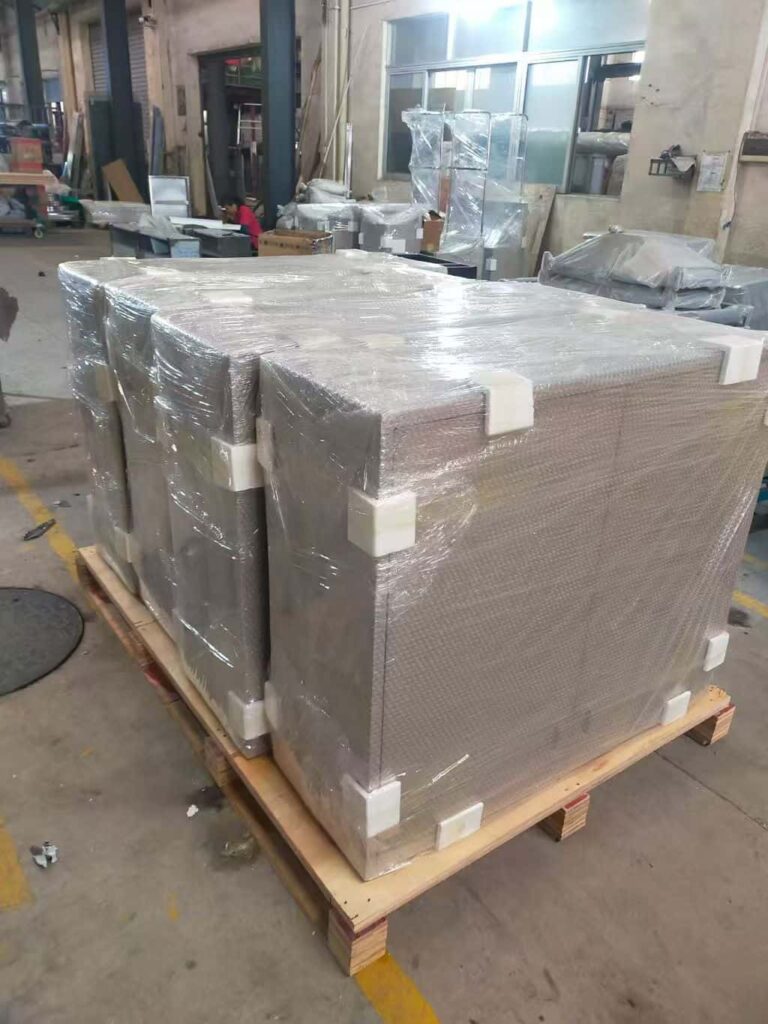In the core battlefield of biopharmaceuticals, the laboratory bench is the first site of technological breakthroughs. Experimenters precisely manipulate pipette guns in front of ultra-clean benches to inject cell suspensions into culture flasks – a seemingly mundane daily operation that is driving a revolution in productivity. The basis for all this is the scientifically designed laboratory furniture system.
Laboratory bench: the precision engine of cell culture
Every bottle of highly viable seed cells begins with careful operation on the lab bench:
- Aseptic operation area: the ultra-clean bench is designed with corrosion-resistant stainless steel table top with sealed water-blocking edge to avoid cross-contamination.
- Human-Machine Collaboration: Ergonomic height (800-900mm) and curved edges reduce operation fatigue; adjustable round stool allows the experimenter to maintain the best posture.
- Intelligent Configuration: Embedded power socket, gas line interface and drip rack are integrated in the table top to avoid tangled pipelines.

Customized furniture: a seamless bridge from R&D to scale-up
Successful industrialization of biopharmaceuticals relies on precise validation at the laboratory stage. Modular design steel and Frame lab bench have become the mainstream choice:
- Steel frame structure provides ultra-high load-bearing capacity (up to 800kg) to support large instruments; wooden cabinets enhance visual comfort.
- Flexible Layout: For small space, C-shaped side table is used to fit the curved wall; for large labs, the combination of “island + side table” is used, with 1.8 meters reserved for safe passage.
- Core Accessories:
- All-steel reagent racks categorize culture bottles and consumables;
- Foot-controlled faucet frees hands and avoids contamination;
- Embedded lab Sinks is acid and alkali corrosion resistant, one-piece molding without gaps.
Materials science: the cornerstone of safety and performance
Lan bench performance is directly linked to experimental results:
- laboratory-worktops Revolution
- Ceramic countertops (beige gray/black) are scratch-resistant and heat-resistant, with rounded edges to enhance safety;
- Epoxy Resin Board Resistant to solvent erosion, life expectancy increased by 3 times.
- Safety protection: the fume hood is equipped with HEPA+activated carbon double-layer filtration, with wind speed up to 0.5m/s, ensuring zero leakage of toxic gases; the corner emergency eyewash can be activated for flushing within 6 seconds.

Space aesthetics: the invisible force that inspires creativity in research
The modern laboratory breaks down stereotypes and blends function with aesthetics:
- Color psychology: blue and white color scheme enhances concentration; wood grain finish relieves visual fatigue.
- Optical flow design: the lab workbenches is laid out perpendicular to the outer wall to avoid glare interference during microscope operation.
Lab of the future: intelligent and sustainable evolution
Cutting-edge technology is reshaping the shape of the workbench:
- Digital Twin System: sensors monitor the temperature and humidity of the bench in real time, and data linkage AI optimizes the cultivation parameters.
- Micro bioreactor: directly embedded in the bench, simulating thousands of upgraded production environments and shortening process development cycles.
- Green material: recyclable steel and environmentally friendly resin tabletop, reducing carbon footprint by 60%.

Conclusion: From bench to global patient lifeline
The future of biopharmaceuticals is inscribed on every lab bench —
- When customized steel and wood side tables carry the precision operations of gene editing;
- When ceramic benchtops record the expression curves of monoclonal antibodies;
- When the hum of the fume hood resonates with the bioreactor ……
Laboratory furniture has transcended the category of “equipment” and become the core carrier of technology industrialization. Here, scientific research wisdom and humanized design are intertwined to promote more innovative therapies from the clean table to the world.
This article combines the dual perspectives of biopharmaceutical process and laboratory planning, with data and case studies from industry practice. Technical parameters in accordance with ISO 14644 and ANSI/ASSP Z9.5 safety standards.




